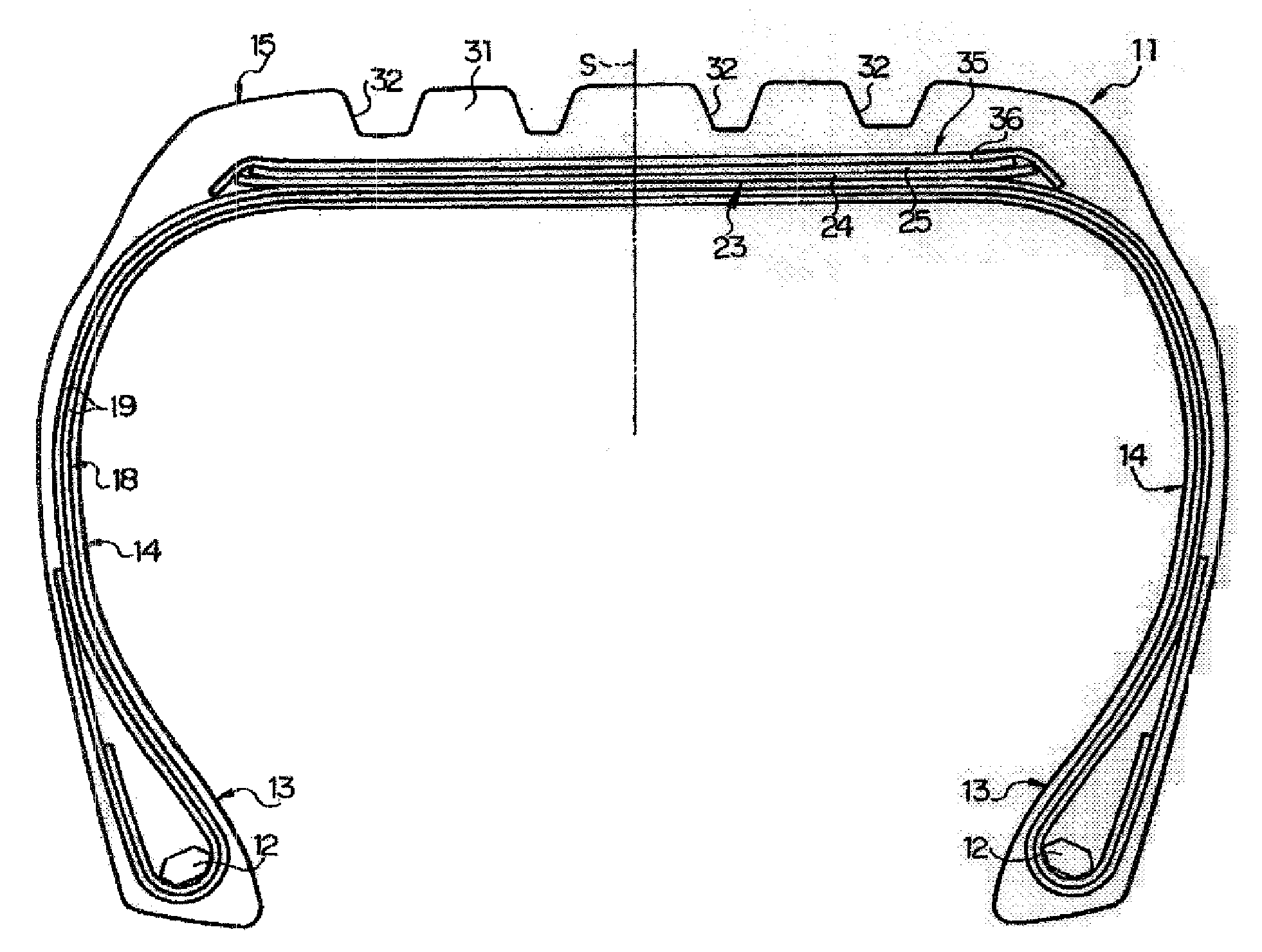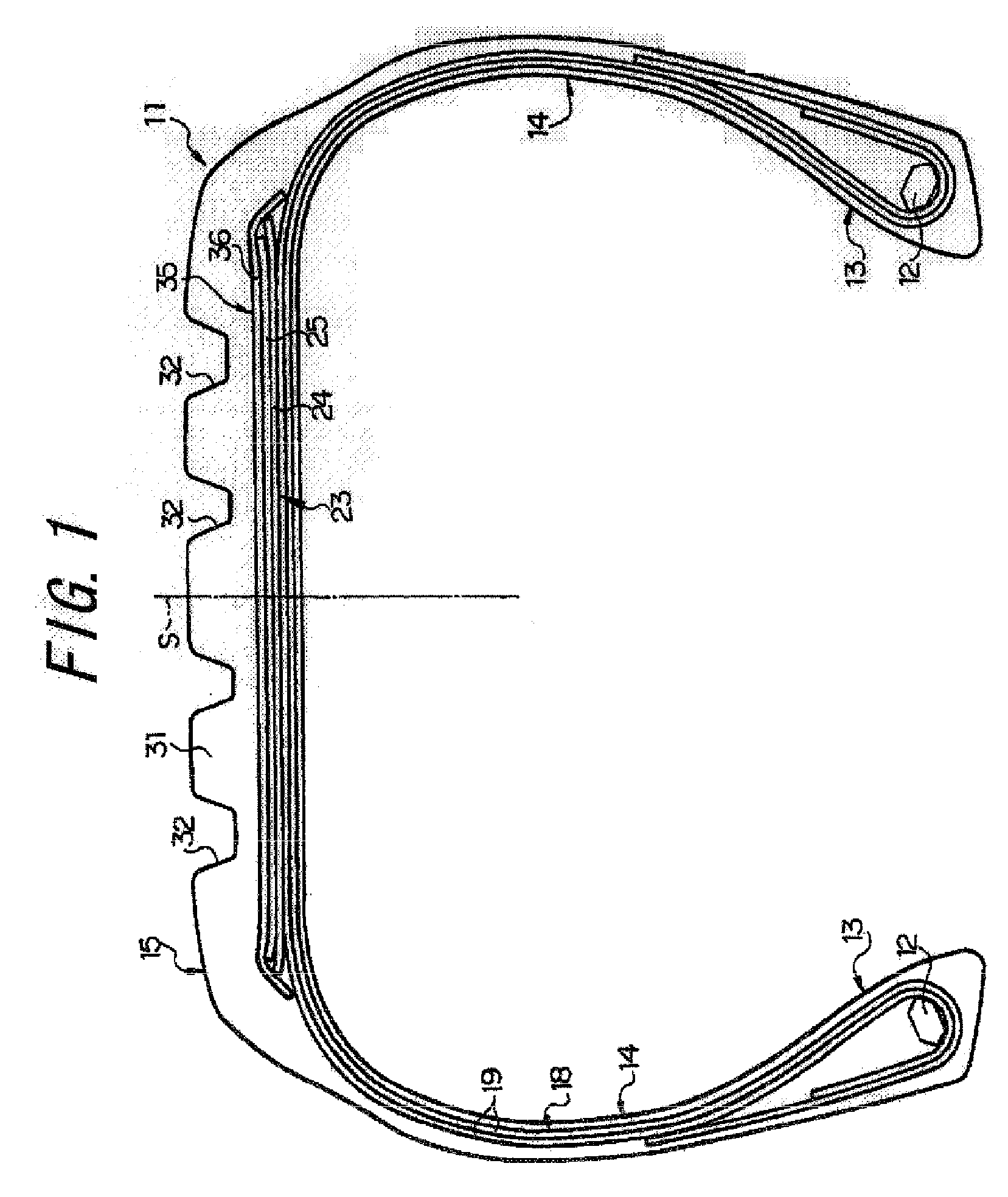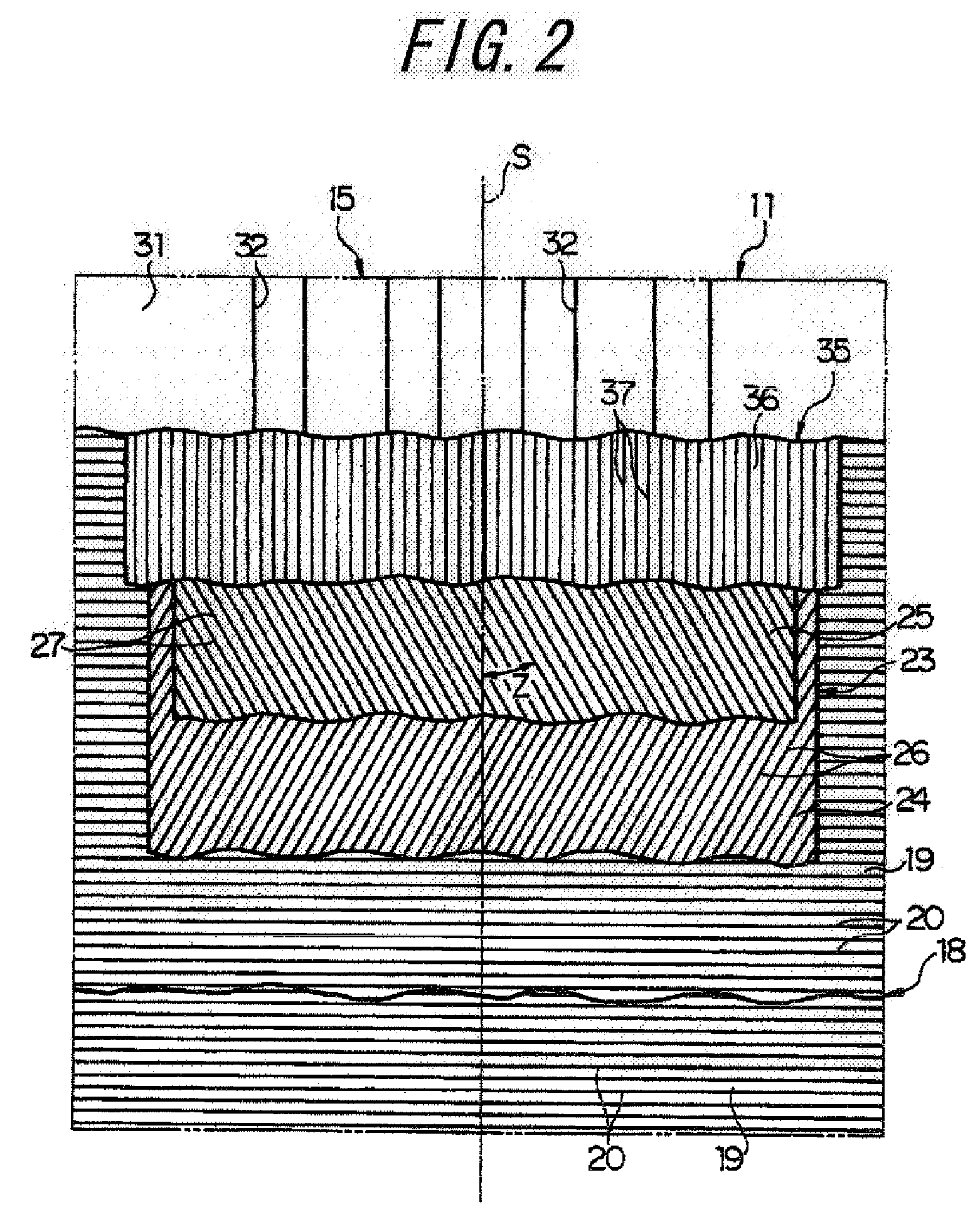Pneumatic Tire
a technology of pneumatic tires and springs, applied in the field of pneumatic tires, can solve the problems of increasing the constant of the vertical spring, reducing the steering stability in the low and middle speed range, and reducing the riding comfort, so as to increase the ground contact area, increase the steering stability, and increase the riding comfort
- Summary
- Abstract
- Description
- Claims
- Application Information
AI Technical Summary
Benefits of technology
Problems solved by technology
Method used
Image
Examples
example 1
[0088]Next, Test Example 1 will be described. In this test, there were prepared: a conventional tire 1 as shown in FIGS. 1 and 2 in which cords A are embedded in remote and contact belt plies at a placement interval (a distance between center points of adjacent belt cords) of 1.2 mm; a conventional tire 2 similar to the conventional tire 1 except that belt cords in the remote and contact belt plies are cords B; an embodiment tire 1 as shown in FIGS. 1 and 2 in which the cords B are embedded in the remote belt ply at a placement interval of 1.2 mm and the cords A are embedded in the contact belt ply at a placement interval of 1.2 mm; an embodiment tire 2 similar to the embodiment tire 1 except that belt cords in the remote belt ply are cords C; an embodiment tire 3 similar to the embodiment tire 1 except that belt cords in the remote belt ply are cords D and belt cords in the contact belt ply are cords E; and an embodiment tire 4 similar to the conventional tire 1 except that placeme...
example 2
[0096]Next, Test Example 2 will be described. In this test, there were prepared: a conventional tire 3 as shown in FIGS. 3 and 4 in which cords A are embedded in remote, intermediate, and contact belt plies at a placement interval of 1.2 mm; a conventional tire 4 similar to the conventional tire 3 except that belt cords in the remote, intermediate, contact belt plies are cords B; an embodiment tire 5 similar to the conventional tire 3 except that belt cords in the remote and intermediate belt plies are the cords B; and a comparative tire 5 similar to the embodiment tire 5 except that the cords in the remote belt ply and the cords in the contact belt ply are interchanged.
[0097]Each of the tires was a high performance tire for a passenger car having the size of 245 / 55R17, a carcass layer of each tire was constituted by two carcass plies in which nylon cords that cross the tire equator S at 90 degrees are embedded, and reinforcement cords constituted by strands of aromatic polyamide fi...
example 3
[0101]Next, Test Example 3 will be described. In this test, there were provided: a conventional tire 5 as shown in FIG. 5 in which inclination angles θ of belt cords in a next adjacent belt ply and an adjacent belt ply are 40 degrees to the upper right and 40 degrees to the upper left, respectively, and an inclination angle of a reinforcement cord in a belt reinforcement layer is 0 degree; an embodiment tire 6 similar to the conventional tire 5 except that the inclination angles θ of the belt cords in the next adjacent belt ply and the adjacent belt ply are 60 degrees to the upper right and 20 degrees to the upper left, respectively; and a comparative tire 6 similar to the conventional tire 5 except that the inclination angles θ of the belt cords in the next adjacent belt ply and the adjacent belt ply are 20 degrees to the upper right and 60 degrees to the upper left, respectively.
[0102]Each of the tires was a high performance tire for a passenger car having the size of 245 / 55R17, a...
PUM
 Login to View More
Login to View More Abstract
Description
Claims
Application Information
 Login to View More
Login to View More - R&D
- Intellectual Property
- Life Sciences
- Materials
- Tech Scout
- Unparalleled Data Quality
- Higher Quality Content
- 60% Fewer Hallucinations
Browse by: Latest US Patents, China's latest patents, Technical Efficacy Thesaurus, Application Domain, Technology Topic, Popular Technical Reports.
© 2025 PatSnap. All rights reserved.Legal|Privacy policy|Modern Slavery Act Transparency Statement|Sitemap|About US| Contact US: help@patsnap.com



